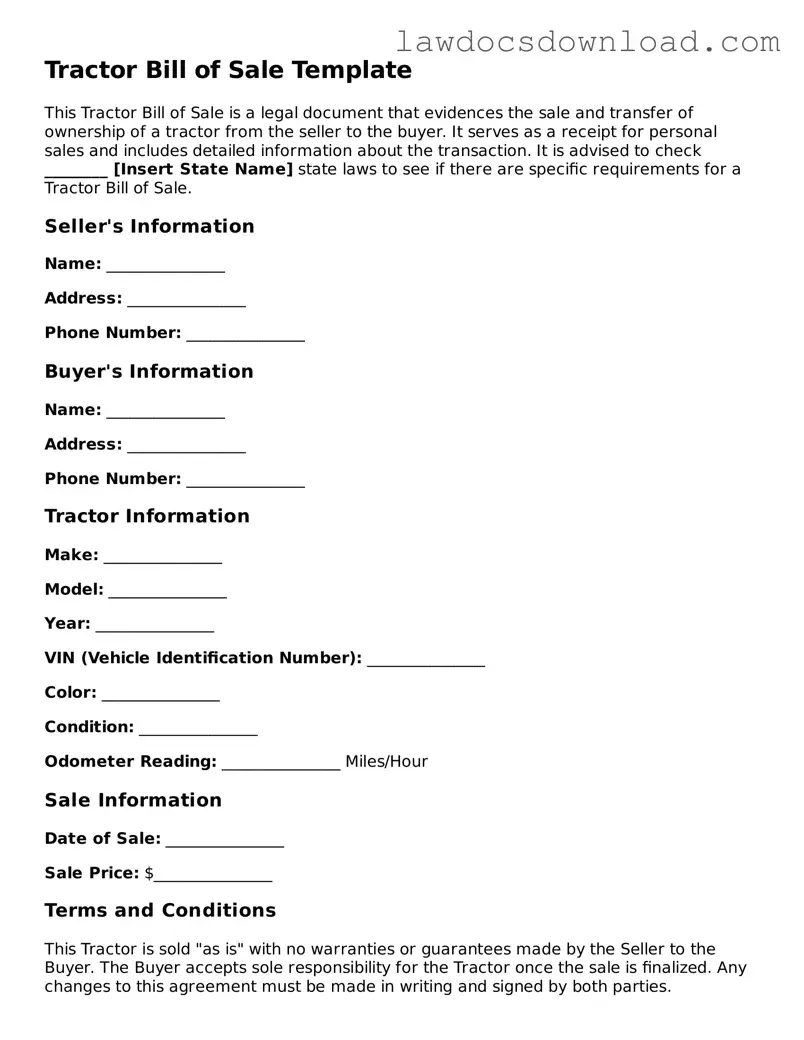Tractor Bill of Sale Template
This Tractor Bill of Sale is a legal document that evidences the sale and transfer of ownership of a tractor from the seller to the buyer. It serves as a receipt for personal sales and includes detailed information about the transaction. It is advised to check ________ [Insert State Name] state laws to see if there are specific requirements for a Tractor Bill of Sale.
Seller's Information
Name: _______________
Address: _______________
Phone Number: _______________
Buyer's Information
Name: _______________
Address: _______________
Phone Number: _______________
Tractor Information
Make: _______________
Model: _______________
Year: _______________
VIN (Vehicle Identification Number): _______________
Color: _______________
Condition: _______________
Odometer Reading: _______________ Miles/Hour
Sale Information
Date of Sale: _______________
Sale Price: $_______________
Terms and Conditions
This Tractor is sold "as is" with no warranties or guarantees made by the Seller to the Buyer. The Buyer accepts sole responsibility for the Tractor once the sale is finalized. Any changes to this agreement must be made in writing and signed by both parties.
Signatures
Please ensure that both the Buyer and the Seller sign and date this Bill of Sale as a confirmation of the transaction.
Seller's Signature: _______________ Date: _______________
Buyer's Signature: _______________ Date: _______________
Witness (If applicable)
Witness's Signature: _______________ Date: _______________
Witness's Name (Print): _______________
Note: This document is subject to the laws of ________ [Insert State Name]. It is recommended to keep a copy of this document for your records.
